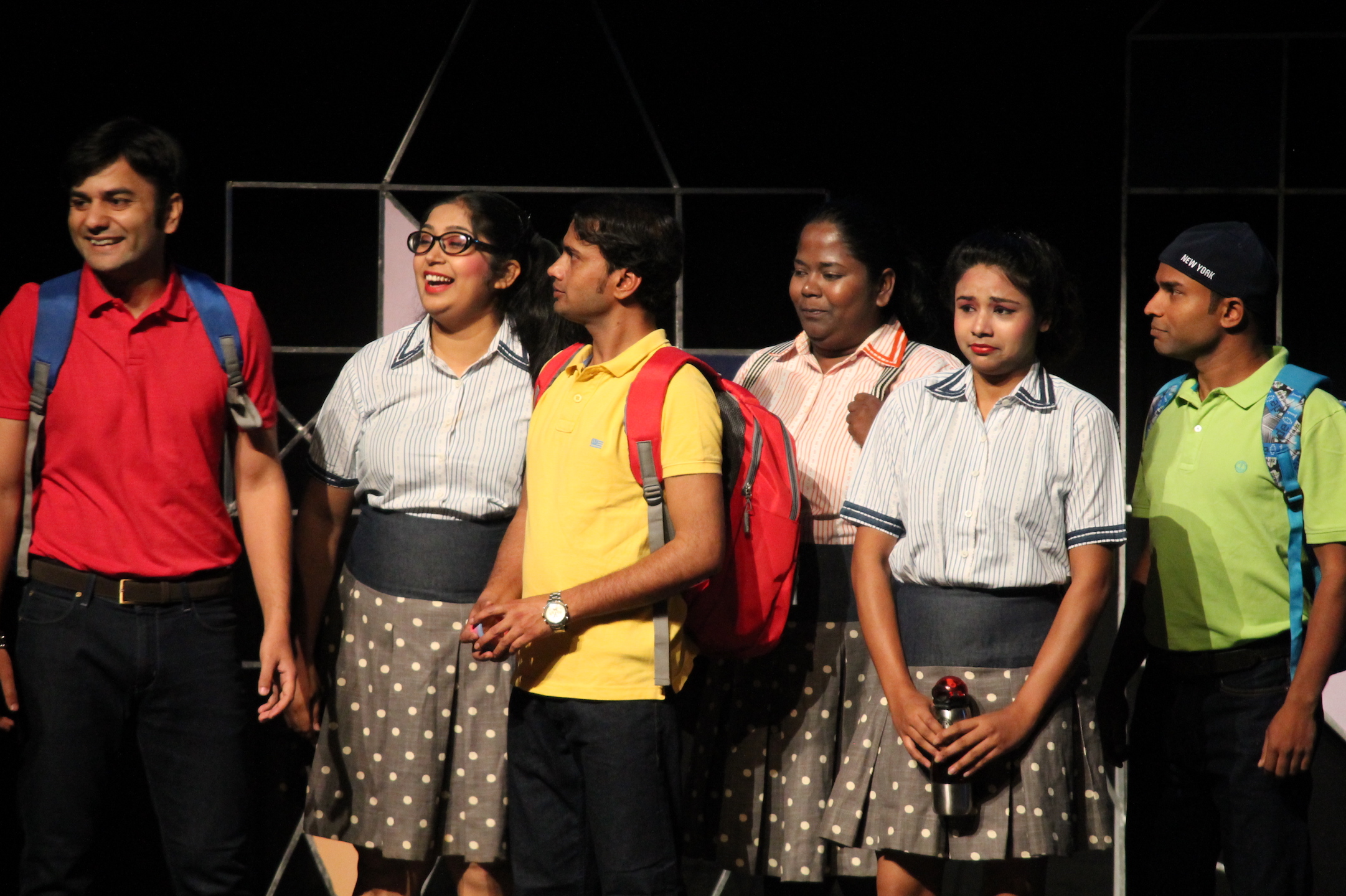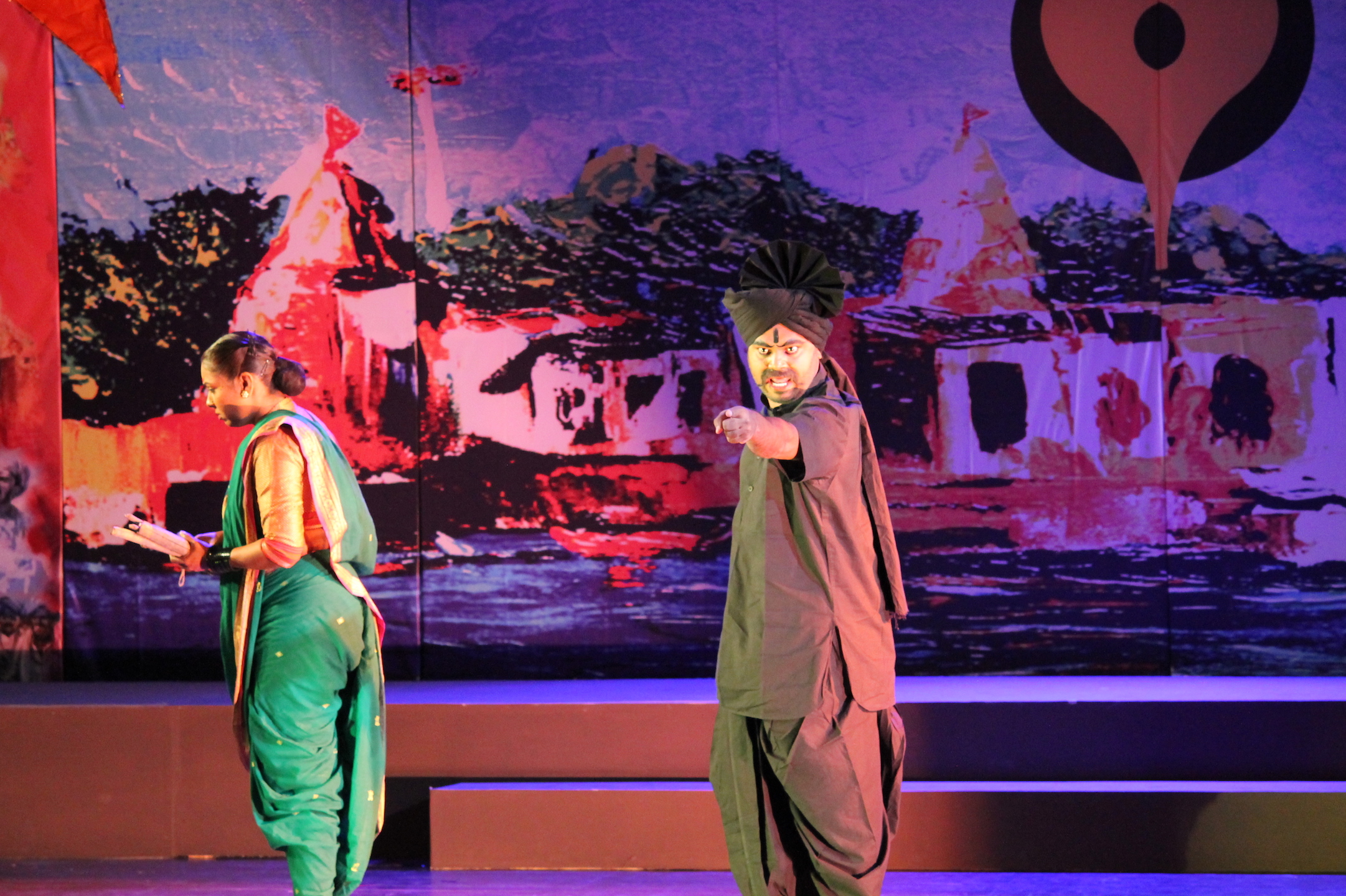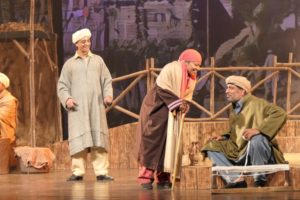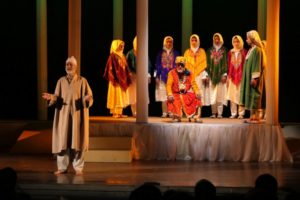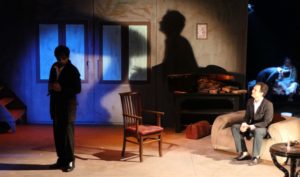Across The Sea (Puppet Play)
The Play
This is a non-verbal musical puppet performance for children aged 4 +. Across the Sea, as the title suggests, is about an adventure that takes a baby penguin from Antarctica across the sea to Africa. In this journey the baby penguin meets many new & strange creatures, and makes friends fearlessly and without judgment. This is a story of friendship between diverse people in today’s global world. This play addresses issues like being separated from family, adjustments and being free of prejudice and judgment. It celebrates diversity, differences and the spirit of childhood.
Director’s Note
This piece was created over a month of devising with the actors of TIE (Theatre-in-Education) Company. The story of a little lost creature emerged and became the story of a lost penguin baby, separated from his family but determined to survive and make new friends. The story emerged in pieces as the actors responded to stimuli like story-telling without words, playing with material and with different forms of puppetry. The little penguin has all the qualities of little children, and lives their fantasies of travel and adventure while learning about Africa and Antarctica. We hope that with this play would make the children in the audience fall a bit in love with theatre and puppets.
The Director
Anurupa Roy is a Puppeteer, Puppet Designer & Director. She has trained at the Marionette Teatern, Dramatiska Institute, University of Stockholm, and at the Scoula De La Marionette. In 1998 she started Katkatha Puppet group which was registered as the Katkatha Puppet Acts Trust in 2006. Anurupa has been an artist-in-residence at Rote Fabrik, Zurich; APPEX, Bali, Indonesia; University of California, Los Angeles; Deutches Forum for Figunrenteater, Germany; and Charleville Mezeires, France. She is a recipient of the Bismilla Khan Yuva Puraskar (SNA) 2006.
The Group
The Theatre-in-Education Company (Sanskaar Rang Toli) of the National School of Drama was established on October 16, 1989, and is one of the important educational resource centres in the country. The TIE Co. consists of a group of actor-teachers working-with and performing-for children. The major focus of the company is to perform creative, curriculum based, and participatory plays in school, designed and prepared specially for children of different age groups. The company holds a one month long intensive Summer Theatre Workshop for Children organized in May-June every year. TIE Co. also participated in the International Theatre Festival at Warsaw (Poland). Participated in International Symposium on Actor’s Training Theatre Showcase at Beijing (China), Manila (Philippines) and also performed in International Theatre Festival at Shinzouka (Japan). Jashn-e-Bachpan and Bal Sangam are biannual festivals organised by the company where it invites plays by and for the children from different parts of the country. Bal Sangam is a festival of Indian performing folk and traditional arts presented by children practicing these arts from different regions of the country.
Cast & Credits
| Baby Penguin | Soumita Kundu |
| Penguin’s Parents | Aparna Kapoor, Manoj Sharma |
| Penguin | Manoj Kumar, Nidhi, Mahesh, Soumita, Manoj Sharma, Aparna, Mridul, Jayotsna |
| Egg | Soumita, Jyoti Bala, Piyush |
| Fish | Manoj Sharma, Aparna, Mridul, Nidhi |
| Ants | Aparna, Mahesh, Jyoti, Piyush |
| Ostrich | Aparna, Mahesh |
| Giraffe | Tasabber, Nidhi, Mridul, Manoj Sharma |
| Flamingo | Jyotsna, Piyush, Aparna, Jyoti, Kaleem, Mahesh |
| Crab | Manoj Kumar |
| Baby Elephant | Tasabber Ali |
| Crocodile | Nidhi S Shashtri |
| Bird | Jyoti Bala |
| Mother Elephant | Jyotsna, Mahesh, Kaleem |
| Hunter | Mridul |
| Tourist | Manoj Sharma, Aparna |
| Mountain & Water Set- Up | Tasabber, Piyush, Manoj Kumar, Jyoti, Mahesh |
| Shadow | Jyotsna, Piyush |
| Light Operation | Meeta Mishra |
| Light Assistant | Dhirendra |
| Music Operation | Vikramjeet Singh |
| Stage Manager | Tasabber Ali |
| Director | Anurupa Roy |
| Chief of TIE Co. | Abdul Latif Khatana |

